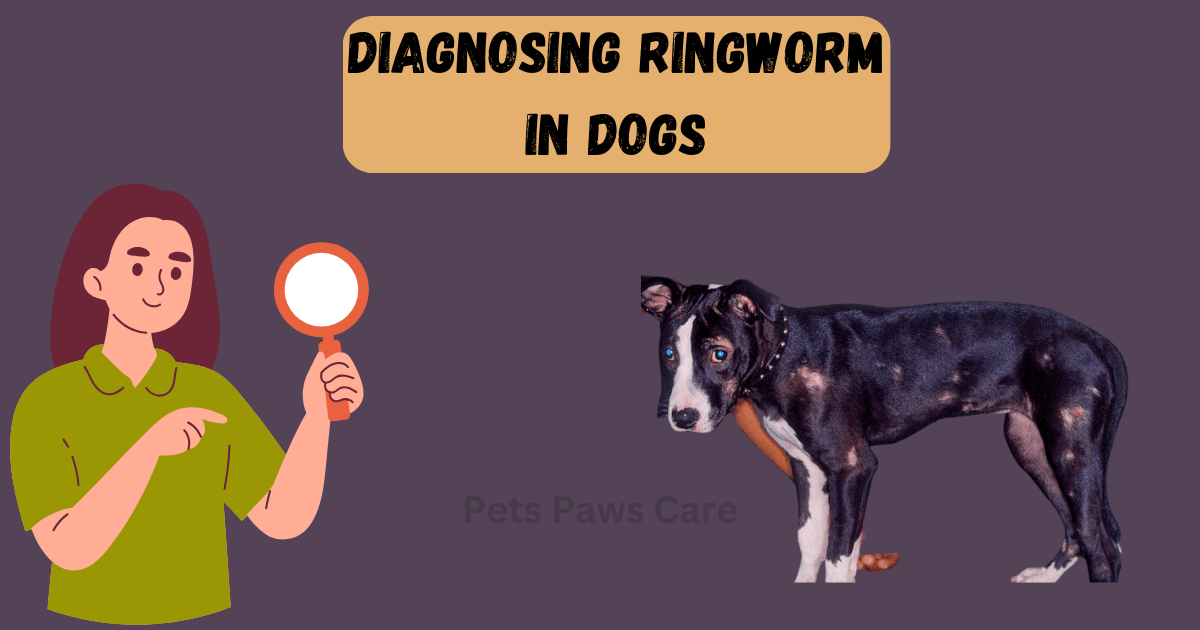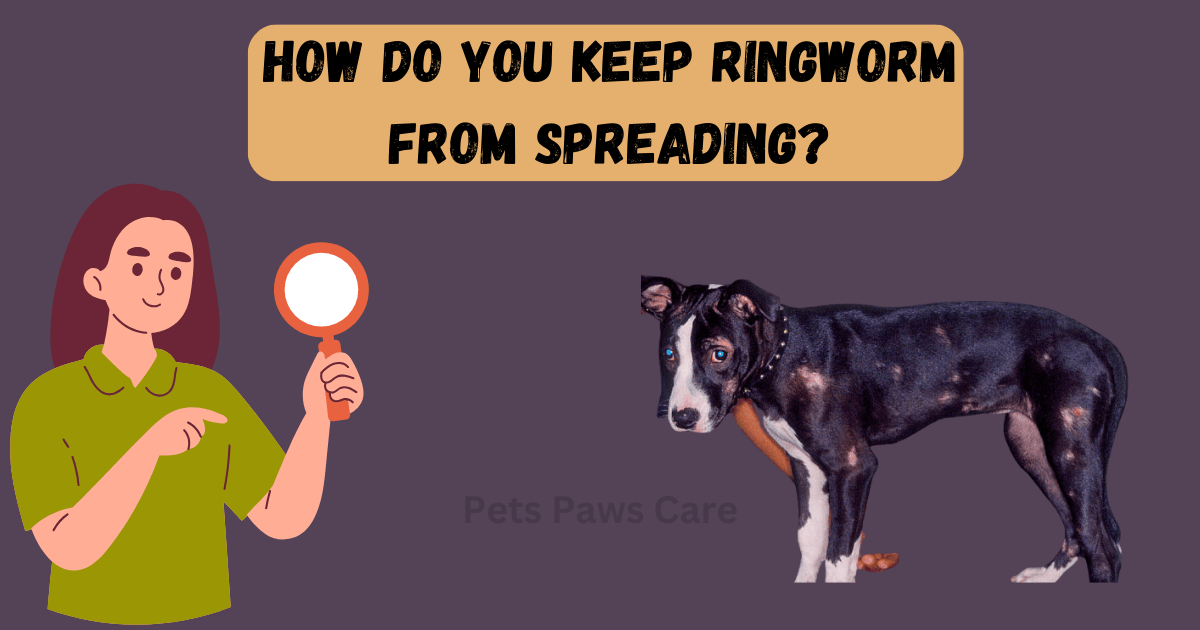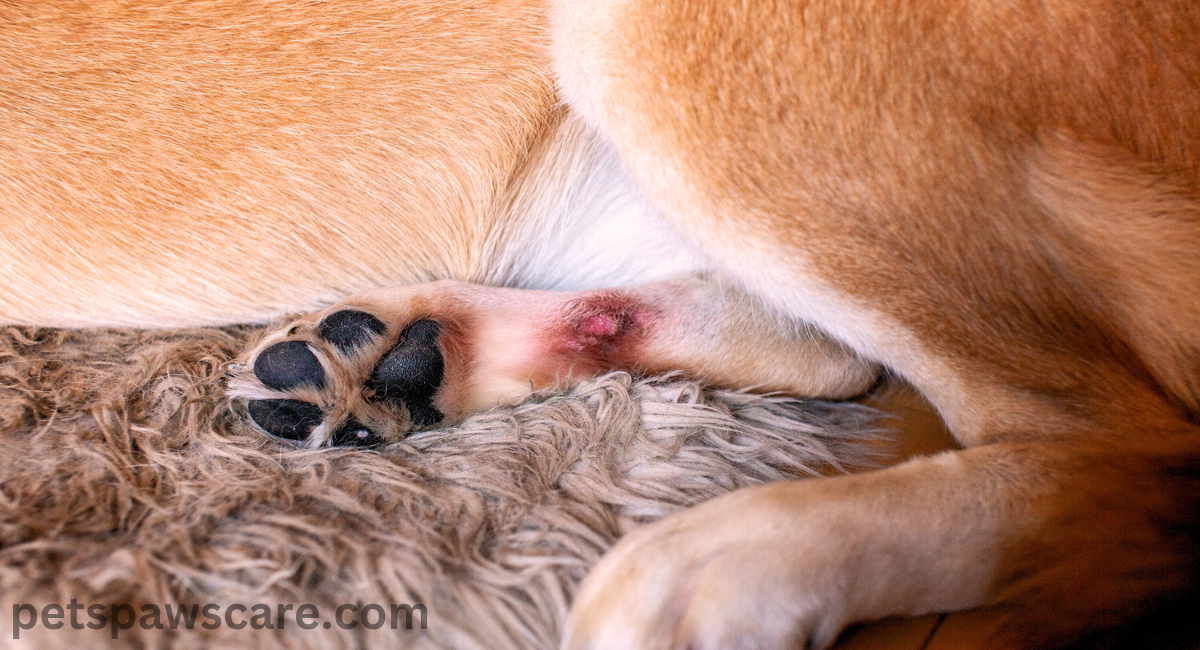Ringworm in dogs is a fungal infection that shows up as circular patches of bald spots or rashes on the skin. These areas are often red, raised, and sometimes ring-like or worm-like in shape, giving the infection its misleading name. Unlike hookworm, roundworm, or tapeworm, ringworm isn’t a worm at all but a fungus, much like athlete’s foot. The infection can lead to swelling and irritated skin, especially if the dog has broken skin or a weakened immune system. If left untreated, it can cause bigger problems, spreading to other animals, people, and even children with sensitive skin.
This fungus produces infective spores that are incredibly hardy and can live in the environment for many years, making it tricky to get rid of completely. These spores thrive on both dogs and other domesticated animals, often infecting their skin, hair, and nails. Vets recommend identifying and treating the infection promptly, as it can easily spread among humans and pets.
How is ringworm transmitted?
Ringworm is highly contagious and can spread quickly through direct contact with an infected animal or person. The fungus responsible for this skin infection can also be transferred by touching contaminated objects like combs, brushes, furniture, or even bedding. Fungal spores can live on surfaces such as carpets or linens for up to 18 months, making it easy for your dog to catch the infection. The spores can also be shed in the fur, getting trapped in fibers, drapes, and other environmental surfaces. If your dog plays outdoors, the fungus can live in the soil, further increasing the risk of exposure.
A dog’s immune system plays a crucial role in whether the infection stays localized or becomes widespread. Factors like the pet’s overall health, age, and species can affect how quickly the ringworm develops. Dog owners should pay close attention to any visible symptoms like patches of hair loss and consult a veterinarian for proper diagnosis and treatment. It’s essential to clean towels, food bowls, and other items used by your dog to prevent environmental contamination and the spread of infection to other pets or family members.
What does ringworm look like on a dog?
When a dog has ringworm, you will often notice patchy areas of hair loss with a crusty covering. The affected areas usually form a circular or ring-shaped pattern, with signs of redness, inflammation, or scarlet lesions. This infection is common in young, elderly, or long-haired dogs, and may appear on the paws, legs, head, or ears.
You may also see itchiness, brittle hair, or alopecia, leading to scabs, nodular lesions, or darkened skin. The infection can affect the claws and nails, causing them to become fragile and break easily. In severe cases, the hair may not regrow, and the ringworm can spread to other animals or people if not treated promptly.
Diagnosing ringworm in dogs:

Ringworm is highly contagious and can spread quickly through direct contact with an infected animal or person. The fungus responsible for this skin infection can also be transferred by touching contaminated objects like combs, brushes, furniture, bedding, and even water bowls or couches. Fungal spores can live on surfaces such as carpets, linens, and drapes for up to 18 months, making it easy for your dog to catch the infection. These spores can also be shed in the fur, getting trapped in fibers or spread while playing outdoors. The fungus can live in the soil, further increasing the risk of exposure.
A dog’s immune system helps fight off the infection, but factors like the dog’s age, overall development, and body condition can determine whether the infection stays localized or becomes widespread. Your dog might be an exposed animal without showing obvious signs, but it could still be a carrier. It’s important for dog owners to consult a veterinarian for a proper diagnosis. Cleaning water bowls, towels, and other items used by your dog can help prevent environmental contamination. Avoid contact with other pets, including dog-walking buddies, until your dog is fully treated and clear of the infection.
How is ringworm in dogs treated?
When a vet diagnoses your dog with ringworm, the treatment depends on the severity of the infection. The vet may prescribe tablets to stop the fungus from reproducing or use topical medication like lotion, shampoo, or creams applied to the skin. In more severe cases, both oral medications and topical treatments may be needed, such as griseofulvin, itraconazole, or terbinafine, to fully cure the infection and prevent recurrence.
Environmental decontamination is crucial—cleaning floors, furniture, and pet hair with a chlorine bleach solution helps eliminate fungal spores. The vet might recommend shaving the fur around infected areas. For effective treatment, a systemic therapy combined with topical therapy, using shampoos like Micaved, Lamisil, or Otibiotic, is often suggested. In severe cases, oral anti-fungal drugs like Sporanox, Fulvicin, or Onmel may be prescribed for at least six weeks. Regular cleaning of all surfaces and proper use of medications is key to keeping your dog and home free of ringworm.
These medicines are suggested by this website: VCA Animal Hospitals
Important Points:
- Topical medication, such as shampoos, lotions, and creams, should be used as prescribed.
- Oral anti-fungal drugs like griseofulvin, terbinafine, and itraconazole are often needed for serious infections.
- Environmental decontamination is crucial—disinfecting rooms, carpets, furniture, and pet hair.
- Regularly use a chlorine bleach solution to eliminate spores.
- Follow the vet’s recommendations carefully to prevent recurring infections.
How do you keep ringworm from spreading?

To stop ringworm from spreading, it’s important to know that the spores are incredibly hardy and can live in the environment for a long time. You must restrict your infected dog to a single room while treating them to avoid the spread. Regular vacuuming of the space is crucial, and you should frequently steam clean soft surfaces like carpets, curtains, and linens to remove spores. After vacuuming, make sure the vacuum bag is emptied and burnt. Items like bedding and toys that can’t be cleaned should also be burnt. Use an effective disinfectant, and your vet can recommend the best one. This ensures the virus doesn’t linger in your home. If left untreated, your dog could easily become infected again.
Avoid direct contact between the infected dog and other pets or people. Spores can become trapped in fibers, furniture, and linens and can even survive in the soil if the dog plays outdoors. Carrying ringworm without showing visible signs or symptoms is possible, so you must take precautions. Regularly disinfect all contaminated surfaces and use strong disinfectants to stop the infection from spreading. By confining your dog and ensuring the environment is properly cleaned, you can help eradicate the fungus and prevent further infections. Your veterinarian will guide you on the most effective way to manage the situation until your dog is fully treated.
How long will my dog be contagious and when should I Quarantine Dogs With Ringworm?
When a dog has a ringworm infection, it is highly contagious and can be passed to other pets or family members. Infected pets can stay contagious for up to three weeks if aggressive treatment is followed, but if minimal measures are taken or you are non-compliant with the prescribed approach, the infection could last longer. During this period, it’s important to confine the dog to a separate room and limit contact with other dogs, cats, and people in the house.
To ensure successful treatment, two negative fungal cultures are needed to confirm the infection is gone. Without proper care, the infection can survive for 6 weeks or even 18 months, although it is not as deadly as some other diseases. Quarantining the dog for at least six weeks is a common recommendation. Constantly battling the infection can become tricky, but following medical advice from the vet and taking your dog to regular appointments can make the process easier and less expensive in the long run.
Will my dog recover from a ringworm infection?
The majority of dogs will recover from a ringworm infection if they are treated appropriately. If the treatment is stopped too early or isn’t aggressive enough, the symptoms may recur. Sometimes, an underlying disease that is compromising the immune system can make the infection harder to cure. In such cases, even with appropriate treatment, the infection can persist, and the veterinarian may need to try alternative anti-fungal drugs alongside topical treatment to ensure full recovery. Regular check-ups will help prevent the infection from coming back.
What is the risk to humans? Can you get ringworm from your dog?
Ringworm can be transmitted from dogs to humans, especially to those with weaker or depressed immune systems like young children or elderly people. The fungus spreads through touching an infected dog, especially if there are scratches, grazes, or skin conditions like eczema. Skin lesions in people appear as thickened, reddened patches with raised scaly edges, often looking like a red circle.
To prevent spreading the fungus, always use gloves and an apron when handling infected animals, and wash hands thoroughly after contact. The fungus can survive in the environment for up to 18 months, so keeping the area clean is essential. Pregnant women should be careful when handling tablets or treatments, and vet visits are crucial for proper diagnosis and care.
FAQS:
- How do I tell if my dog has ringworm?
Look for patches of hair loss, redness, or scaly It may appear as a red circle with raised edges. Visit your vet if you notice these symptoms. - How do you cure ringworm in dogs?
Ringworm is treated with anti-fungal drugs, either as topical treatments (creams, shampoos) or oral tablets. - How do you treat ringworm on a dog?
Use topical medications or oral anti-fungal drugs as prescribed by your vet, and clean your dog’s environment to remove fungal spores. - Can dogs pass ringworm to humans?
Yes, ringworm can spread from dogs to humans, especially if you have a weakened immune system. - Can I touch my dog if he has ringworm?
Avoid direct contact. Wear gloves and wash hands thoroughly after handling your dog.
